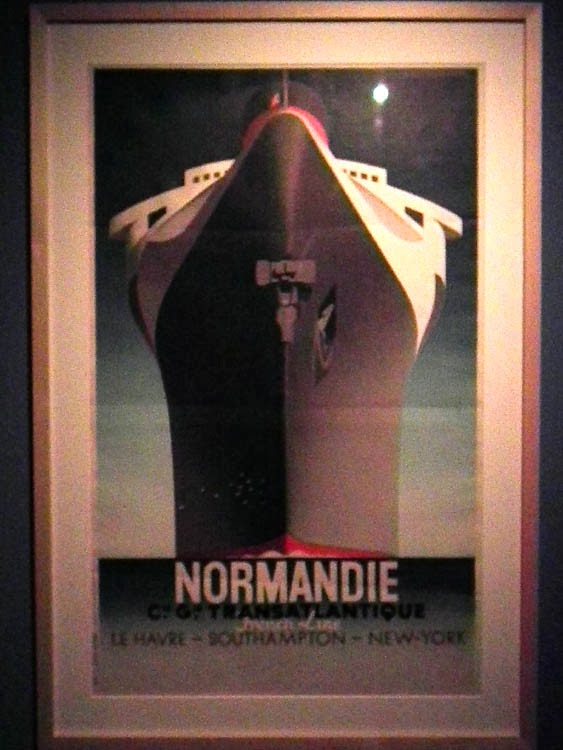The
Petit Palais in Paris is one of our favourite museums. It was first suggested to us a couple of years ago by my friend and ex-colleague Christine, who is a ceramics conservator living in Paris. She mentioned it has a very nice collection of Greek vases, something I am quite keen on. She also pointed out that visiting the permanent collection is free and the café is good. We were sold and so while we were in Paris recently we popped in to the Petit Palais again. I don't think it is on many foreign tourists list of places to visit, so it is not crowded.
The inner courtyard.
It is situated opposite le Grand Palais and houses the City of Paris Fine Arts Museum collection. Both buildings were initially constructed for the Universal Exhibition in 1900, and turned into museums in 1902. Decorative additions to the interiors continued until 1925 in order to achieve the architect's dream of glorifying Paris and the Arts.
Me ordering coffee and mini cakes for morning tea in the café.
The gallery displaying Art Nouveau ceramics and glass.
The main entrance, just before opening time.
An internal staircase with wrought iron banister.
The view from one of the galleries, looking across to a
statue of Clemenceau on the corner of Avenue Wilson and the Champs Elysée and in the general direction of the Elysée Palace (the French presidential residence).
***********************************************************
A la cuisine hier: A humungeous batch of steak and kidney, ready to be made into pie, pudding or just served with mash. 2kg of beef and 1kg of kidneys went in the pot with some onions, mushrooms, red wine, beef stock and various seasonings. Simon bought two packets of beef suet in London when he was there recently, so we can have proper suet pastry for the pudding. You can't get suet ready prepared in France, and it's one of the few things I'm not prepared to faff with doing myself.
Muesli, made with mixed rolled grains from Auchan's bio section, homegrown hazelnuts and proper dried apricots from Australia (ie half apricots dried to intensely flavoured leather, not sickly squidgy Turkish style dried whole apricots). I also added some almond flakes, sunflower seeds and a few sultanas.
Hummus, for spreading on big North African flatbreads with char grilled peppers.
****************************************************************
Chapel News: I attended a meeting of the Société Archaeologique de Preuilly (SAP) yesterday evening. The main topics were the
restoration of the Chapelle de Tous les Saints and the annual concert held in the Abbey on
Assomption in August.
We've got to a slightly frustrating circular stage with the chapel. In order to apply for grants we need an architect's diagnostic report on the problems and likely cost. In order to get an architect's report we need a grant. It was decided to approach the
commune and ask if some of the €10 000 they have pledged for repairs can be used to pay the architect to do the report, which will cost between €1800 and €3900, depending on which architect we go with. There was some concern expressed at what effect the upcoming local elections might have on our promised funding, but my understanding is that the communal budget has been voted on and can not be changed in any significant way by the incoming council once they are elected.
Another alternative would be to ask Bâtiment de France if emergency repairs, funded by the commune's €10 000, can go ahead without the diagnostic. Personally I think it is unlikely BdF will give the go-ahead, and quite rightly.
Jean-Yves updated us on his progress with organising the annual concert and presented the programme suggested by the musicians. This consisted of two Mozart pieces, a Debussy sonata and some Ravel. There was a lot of discussion about how difficult Debussy can be to listen to and whether we should opt for something more populist. The difficulty is the range of instruments played by the chosen group. No keyboards could be a serious drawback. Jean-Yves took the comments on the chin and is going to discuss it with the musicians to see if they can offer something a bit lighter. He's also been having his own frustrations with the grant giving organisations. He needs a couple of thousand euros to make sure the books balance but he's found that the grant giving organisations are bemused by someone from the
patrimoine sector asking for money to stage a
culturel event. As he says, it's all a matter of language and he has to be careful how he words applications.
***********************************************
Local Politics: I'm told there is going to be at least 4 people running for mayor this year in Preuilly, one of whom is our neighbour Guy B.

























































